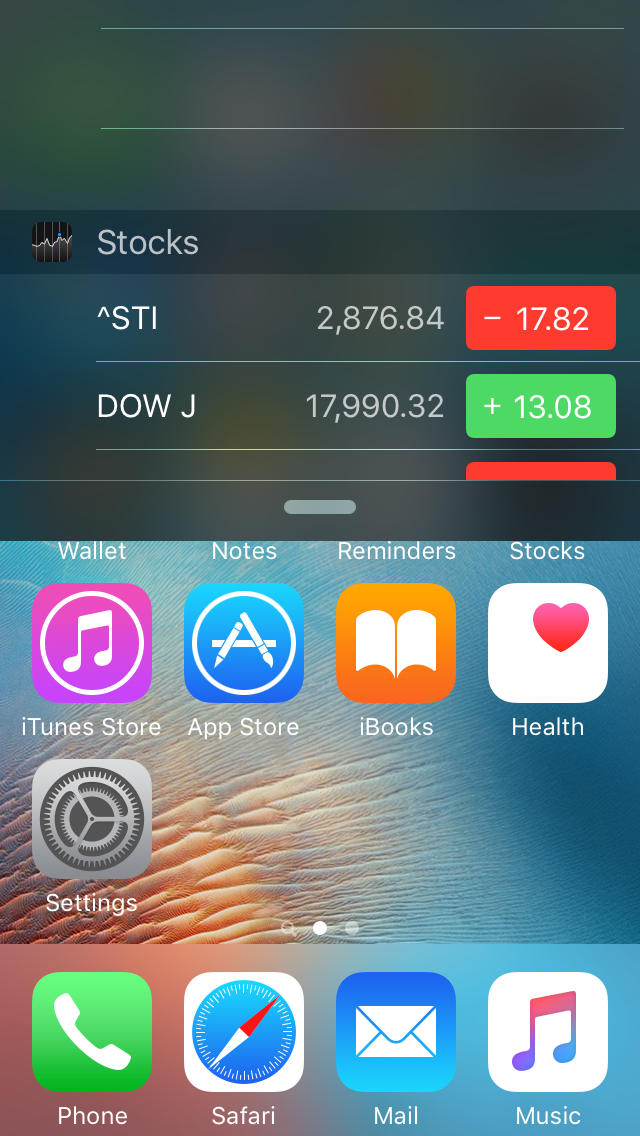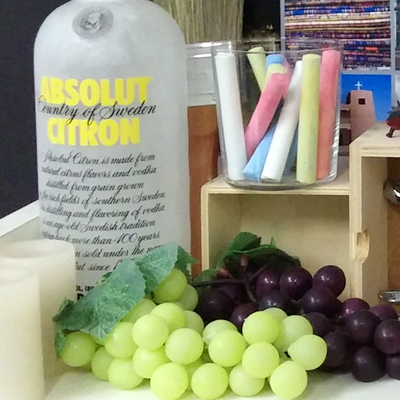Apple iPhone SE review: Mini but mighty
Note: This review was first published on 28th April 2016.
Overview
When Apple announced the 4-inch iPhone SE, my initial reaction was, "who's going to buy a 4-inch phone in 2016?" But you know what, since then I've started keeping track of the phones other people are using on the train or just walking down the street and honestly, the number of people still using an iPhone 4/4s or 5/5s is staggering. In fact, I see more 4s and 5s than 6s. Maybe Apple is onto something? After all, Steve Jobs did famously say that "no one's going to buy that" when referring to larger display phones.
The iPhone SE packs all of the performance of a 2016 flagship smartphone into the body of an iPhone 5s, a phone that was already considered compact back in 2013. It's got the same A9 processor used in Apple's iPhone 6s and 6s Plus, with the same 2GB RAM, and it even has the same upgraded 12-megapixel rear camera. It's also Apple's most affordable iPhone ever, with prices starting at just S$658 (although you'll want the 64GB version for S$828). For comparison, the 16GB iPhone 5c cost S$848. In fact, it's without a doubt the best 4-inch smartphone ever made, but is there a place for it in 2016?
|
|
|
|
|
|
|
|
|
|
Design
The iPhone SE looks almost identical to the iPhone 5s. It has the same aluminum body, with the exact same dimensions of 123.8 x 58.6 x 7.6 mm, and it weighs just 1g more at 113g. I actually really liked the design of the iPhone 5s and I feel it still holds up well now. Even after using a 4.7-inch iPhone for the past year and a half, switching back to the SE's compact design felt like returning to a familiar old friend. In fact, in my iPhone 6 review I commented that the rounded edges of the iPhone 6 make it feel a bit slippery, so going back to the reassuring flat sides and more manageable size of the iPhone SE was quite welcoming. In all my time with the SE I never once felt like I was going to drop it, something that happens on an almost daily basis with my iPhone 6s.

Like the original iPhone 5s, the volume buttons are round and can be found on the left-side. The power button returns to the top of the phone instead of on the right-side like it is on the iPhone 6 and 6s.
One thing that does make the phone look a little dated is the size of its bezels. When you're used to seeing phones with near edge-to-edge displays, the rather wide bezels on the SE makes the screen look even smaller.
Below the display, there's a Touch ID fingerprint scanner. Unfortunately, it's the same first generation scanner that first debuted on the iPhone 5s, and not the faster, more accurate model the 6s uses. It's a little slower to unlock the phone, but it's still fast and accurate.

The only noticeable design change is that the chamfered edges are no longer polished. Instead, they have a matte finish that matches the sides of the phone.

If you want to make sure people know you have a new iPhone and not some three-year-old model, the SE is available in Rose Gold. Of course, Silver, Gold, and Space Gray are also available. By the way, all cases that fit the iPhone 5 and 5s will also fit the SE, so if you're upgrading you don't even need to buy a new case.

After about a week with the SE, the biggest difference for me is how much easier it is to use the phone one-handed. My thumb can actually reach every icon on the screen, and you never have to do that awkward balancing act where you're trying to reach the far side of the screen - even better, there's no need for features like Reachability.
Display and Audio
The SE has the same 4-inch 1,136 x 640 pixels resolution (326 ppi) display as the iPhone 5s, which means it unfortunately doesn't support 3D Touch. While I enjoyed going back to the smaller body of the iPhone SE, the smaller screen took me much longer to adjust to. I've gotten used to a 4.7-inch screen, so seeing everything shrunk down had me constantly squinting at my phone or bringing it closer to my face. The smaller keyboard also caused a number of embarrassing typos - thanks autocorrect!
The screen itself also isn't the best I've seen from Apple. There's a slightly yellowish tinge to whites that just isn't there on the iPhone 6 and 6s. It's good enough though, and the display is bright and sharp enough to use outdoors or under bright lights. Contrast could probably be a little better, but LCD displays will never be able to match up to AMOLED screens for contrast anyway.

The single speaker on the bottom of the SE appears to be exactly the same one found on the 5s. It's decent, but not amazing, with a clear and balanced sound, but it lacks bass and volume.
Operating System
The iPhone SE comes pre-loaded with iOS 9.3. New features in iOS 9.3 include Touch ID protection for Apple Notes and Night Mode, which reduces the amount of blue light emitted by the display in the evening, which can help you get a better night's sleep.

It's worth noting that iOS was originally designed to be used on a 3.5-inch display, and it actually still feels better on a smaller device since your thumb can reach all areas of the screen. This doesn't just mean that all apps are within reach, it's also easier to pull down the Control Center.

Benchmark Performance
The iPhone SE is armed with the same A9 processor and 2GB RAM found inside the iPhone 6s. It also has the same integrated M9 motion co-processor, which means you can use the "Hey Siri" voice prompt to activate Siri whenever you want.
|
|
|
|
|
|
|
|
|
|
|
|
|
|
|
|
|
|
|
|
|
|
|
|
|
|
|
|
|
|
|
|
|
|
|
|
|
|
|
|
|
|
|
|
|
|
|
|
|
|
|
|
|
|
|
|
|
|
|
|
Sunspider Javascript
SunSpider JavaScript measures the browsing performance of a device when processing JavaScript. It not only takes into consideration the underlying hardware performance, but also assesses how optimized a particular platform is at delivering a high-speed web browsing experience.
Safari has always been well optimized for Apple's devices and it continues to perform well with the SE, which was actually slightly faster than the 6s and 6s Plus. In actual usage, web browsing and interface navigation was fluid and fast, although obviously the actual experience isn't as good as it is on the 6s, due to the smaller display.

3DMark Ice Storm Unlimited
3DMark Ice Storm is designed to test the gaming capabilities of a device, putting its GPU through a rigorous OpenGL ES 2.0 benchmark test that uses fixed off-screen rendering with high quality textures and post-processing effects. The Unlimited version of the benchmark disables v-sync, display scaling and other OS factors, making it ideal for chipset comparison.
The SE was again equal to the 6s and 6s Plus on this benchmark. If you want to know just how much more powerful the SE is compared to Apple's last 4-inch phone, it nearly doubled the iPhone 5s' score.

Imaging
The iPhone SE's rear camera has been upgraded to the same 12-megapixel, 29mm, f/2.2 module you'll find on the back of the iPhone 6s. And because the phone itself is a little thicker, there's no camera bump this time round. Like the 6s, you can take Live Photos with the SE, which will record 1.5 seconds of video footage, complete with audio, before and after you hit the shutter button, letting you play them back later like short gifs.
Unfortunately, the front camera hasn't been upgraded, and is the same 1.2-megapixel FaceTime camera that came with the iPhone 6 and 5s. It's adequate for FaceTime video chats - helped by the fact that the display is so small - but selfies tend to look a little blurry.
Image performance from the rear camera was excellent, and photos are indistinguishable from those taken with the 6s. Color reproduction was accurate, and details remain sharp throughout the picture. Having said that, it's not as easy to take good photos with the SE as the 'viewfinder' is tiny.
 |  |
Battery Life
Our standard battery test for mobile phones includes the following parameters:
Looping a 800 x 480-pixel video with screen brightness and volume at 100%
Wi-Fi and Bluetooth connectivity turned on
Constant data streaming through email and Twitter
The iPhone SE has a 1,624mAh capacity battery, which is quite small by today's standards. Fortunately, thanks to a combination of its power efficient A9 processor and undersized display, the SE easily outperformed Apple's other iPhones, lasting 11 hours and 42 minutes in our video looping benchmark. In daily usage, I also found the SE lasting far longer than my 6s. By the end of a full work day, battery life was usually around 50 percent, whereas on my 6s, it would easily have dropped to 20 percent or lower.

Conclusion

The iPhone SE nearly has it all, great performance, long battery life, fantastic camera, attractive design, affordable price, in fact the only thing it doesn't have is a big screen. For all the people still holding onto an iPhone 4 or 5 because you like having a phone that you can actually use in one hand, this is the phone you've been waiting for. Go out and upgrade right now. And if the SE does well, maybe in a year or two, Apple will introduce the iPhone SE 2 (iPhone SEs?).
I wonder though if the SE has come just a little too late. Once you've upgraded to a bigger screen, it's hard to go back. Take for example, my wife, who was previously using an iPhone 4s, and was incredibly reluctant to upgrade to an iPhone 6, because she thought it was way too big. She spent more than two years using her increasingly sluggish 3.5-inch phone holding out hope that Apple might release a smaller iPhone. Then the 6s and 6s Plus launched and there was still no small iPhone in sight. So she bit the bullet and upgraded to an iPhone 6s and spent the next few weeks complaining about how the display is way too big and she can't reach half the icons on the screen. So when I got my hands on the iPhone SE, I thought, this is exactly what she's been waiting for, a small phone with updated specs. And I gave it to her to play with, and you know what she said? "This phone is way too small, it feels smaller than my old phone." You really can't go back.
The way we use our smartphones today - reading websites, sending messages, watching videos, viewing pictures on Instagram and Facebook - all benefit from a larger display. On the SE's tiny display, Instagram shows one picture at a time, which means a lot of scrolling. This isn't the same smartphone Steve Jobs was talking about back in 2010 when he said no-one would want a big phone. Back then, people spent a lot less time looking at their smartphones. Now we probably spend more time looking at our phones than anything else we do. Just look around you on the train. And looking further forward, it's only going to get worse (or better depending on how you look at it). With virtual reality and the Internet of Things, you're going to be looking at your smartphone display more and more, and that means you will want a big screen. The iPhone SE may be perfect right now for people still resisting large displays, but it's only a matter of time until you upgrade, and when you do you'll wonder why you didn't do it sooner.




